Growing lettuce in the summer heat
It’s time to harvest the dill and put it in the freezer. But before that, I’d like to share a picture of the companion planting I’ve done here and tell you more about the different kinds of lettuce I’ve used.
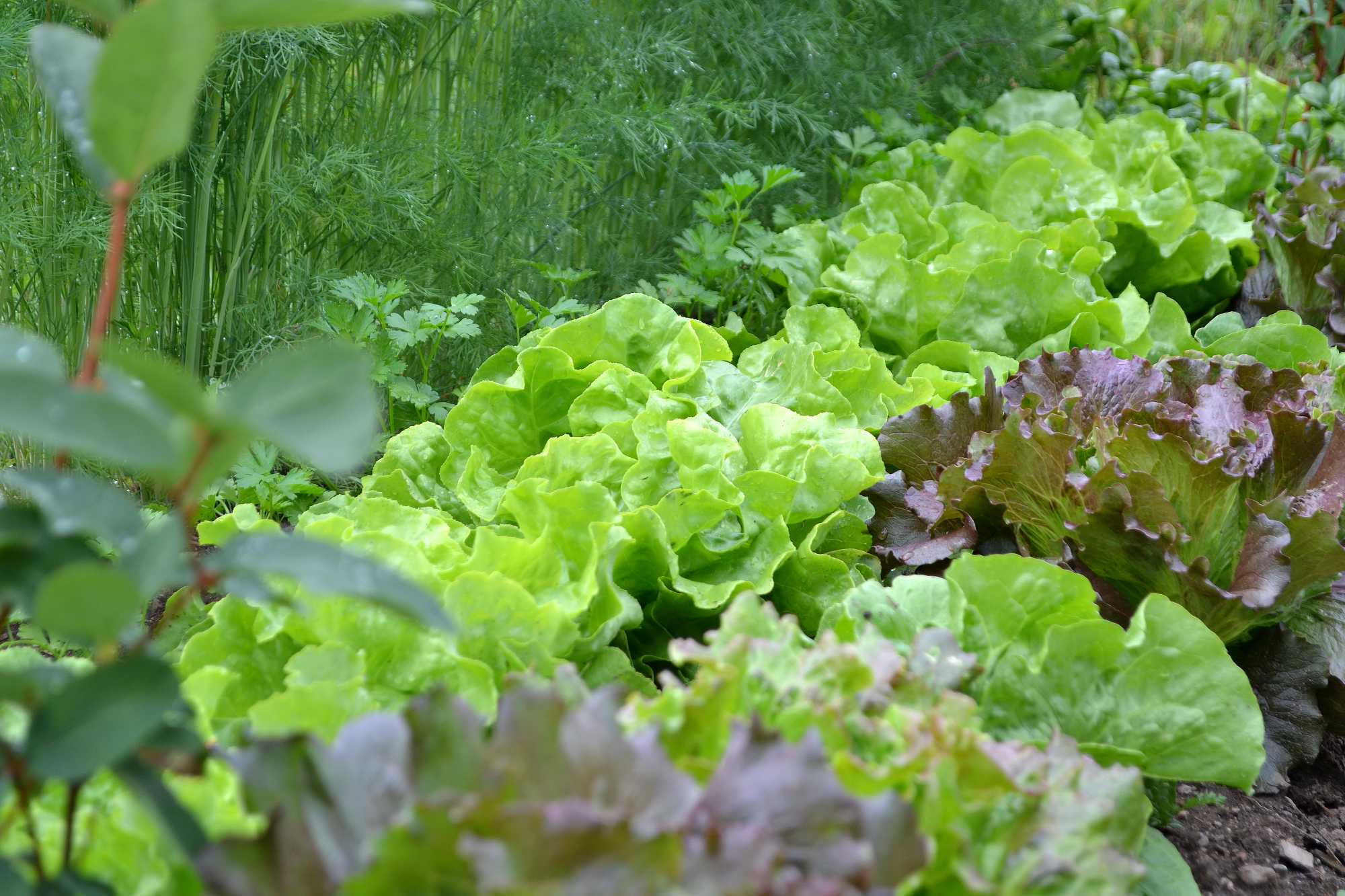
My companion planting of Batavia, dill, and honeyberries.
I think we all use companion planting methods to some extent: We put different vegetables close together because it looks beautiful or saves us some space. And sometimes it just happens by chance. But I know how tricky it can be when you’re ready to start planting and need to figure out what to put where.
As usual, I think a lot about how to utilize the available space to get as much out of it as possible. I hope this will give you a few ideas.
Growing lettuce: which lettuce should you pick?

This particular garden bed is located between the kitchen garden area and the pasture. I used to grow raspberries here and I just managed to remove all of the remaining raspberry sprouts!
Sowing and planting
My garden bed is around five meters (16 feet) long and facing south towards a pasture. There’s not a lot of protection against the warm sun and it gets quite dry and uninhabitable for a lot of vegetables.
I sowed my dill of the variety Tetra (which you can put in the freezer) right here by the pasture. I created a row, watered it and then scattered the seeds quite close to one another before covering the seeds with soil.
I’ve also planted the Gigante d’Italia parsley just behind the dill.
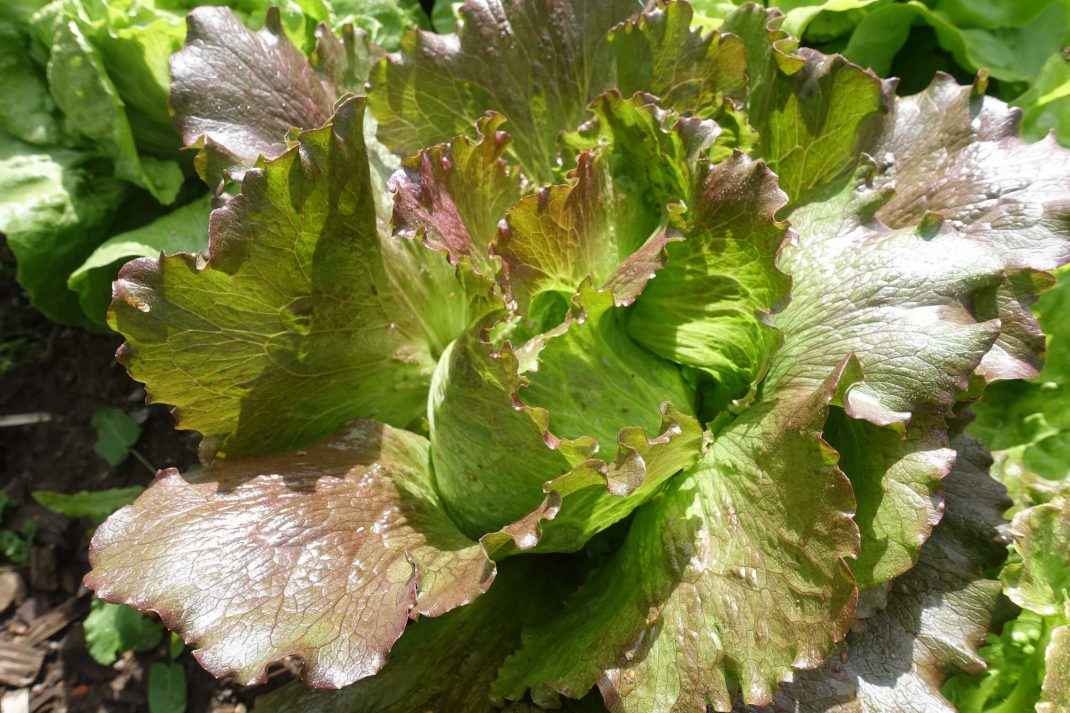
Cardinale is a tasty lettuce variety with a nice crunch.
There are already four plants in place in the garden bed from before, four honeysuckles. I then put two rows of the Batavia varieties Cardinale, Buttercrunch, Maravilla de Verano and Anuenue between them.
I picked these varieties because they can take warm and dry conditions without bolting. A less hardy type of lettuce would probably not like this dry and very sunny spot. The varieties that I’ve chosen aren’t very picky though. All of this is worth taking into consideration to get the best possible results when you’re growing in a sunny spot. If I may say so myself, I’m actually quite good at growing lettuce. One of the reasons is that I’ve become an expert in choosing which varieties to use during which seasons and of course, where.
The summer months weren’t as dry as I had expected though. It was quite dry for a few weeks after I planted the dill but I only had to water my dill and parsley a few times after that.
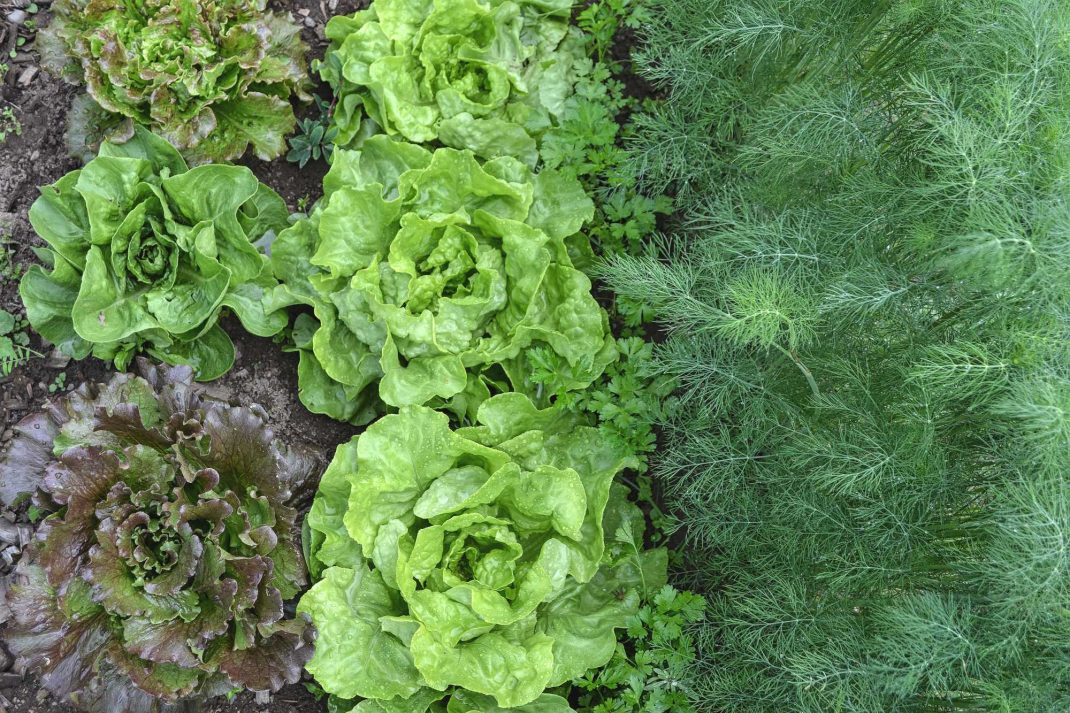
Growing different vegetables together often looks very pretty. You can easily plant lettuce between other vegetables where there’s enough space.
I have to point out the importance of researching the different plants before you start putting them together. This task starts already in the garden center when you’re shopping for seeds. I have a few favorites that I always go for, but I make sure to do my research when choosing a new variety. It’s really convenient to do this in the online stores where it’s easy to find all the information I need.
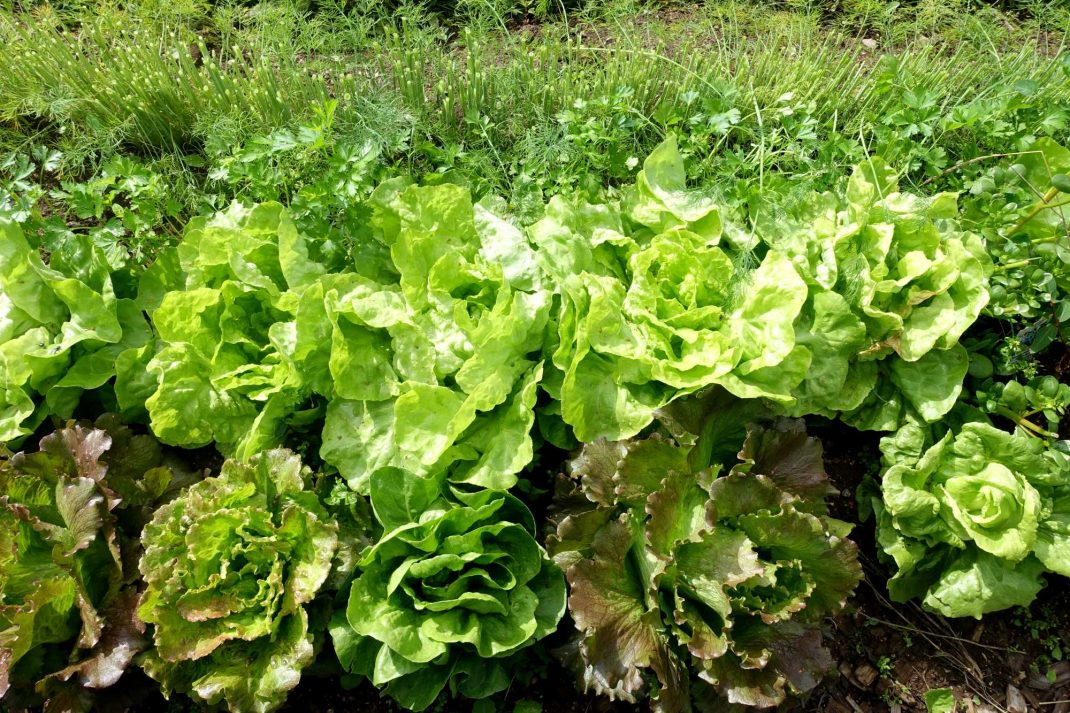
This is what my garden bed looks like when I’ve harvested the dill.
I finally cut the dill and put it in the freezer. Unfortunately, it grew a bit too tall. Taller plants are harder to chop because the stalks are thicker. If you want to chop your dill into portion sized batches before you put it in the freezer, I recommend that you harvest the dill when it’s around 20-30 centimeters (8-12 inches) tall. This way, you can use the entire plant without having to remove the stalk.
I’ll also take the opportunity to go through the rows an extra time and add some liquid fertilizer since dill (like most leafy greens) require quite a lot of fertilizer. It will, after all, grow back up again, ready to harvest in the fall. After that, it’s time to harvest my lettuce. But not until I’ve moved the Batavia varieties from the polytunnel.
A few of you might question whether we’ll manage to eat all of that lettuce. And the answer is yes, we’re good at eating everything I grow. We probably use a lettuce head every day. I harvest every other lettuce head and leave the rest for another day. Good luck!
/Sara Bäckmo
11. June 2021


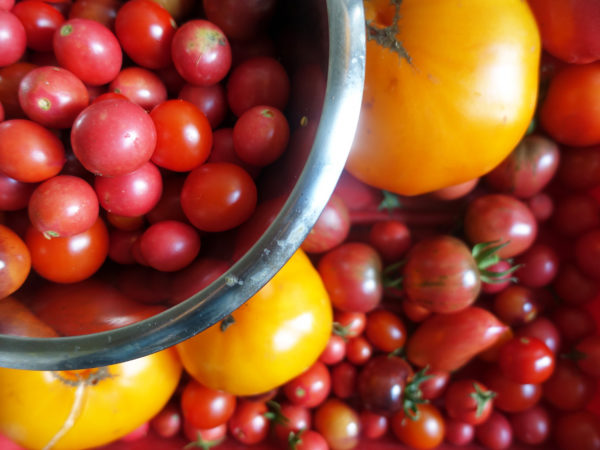
Leave a Reply
You must be logged in to post a comment.